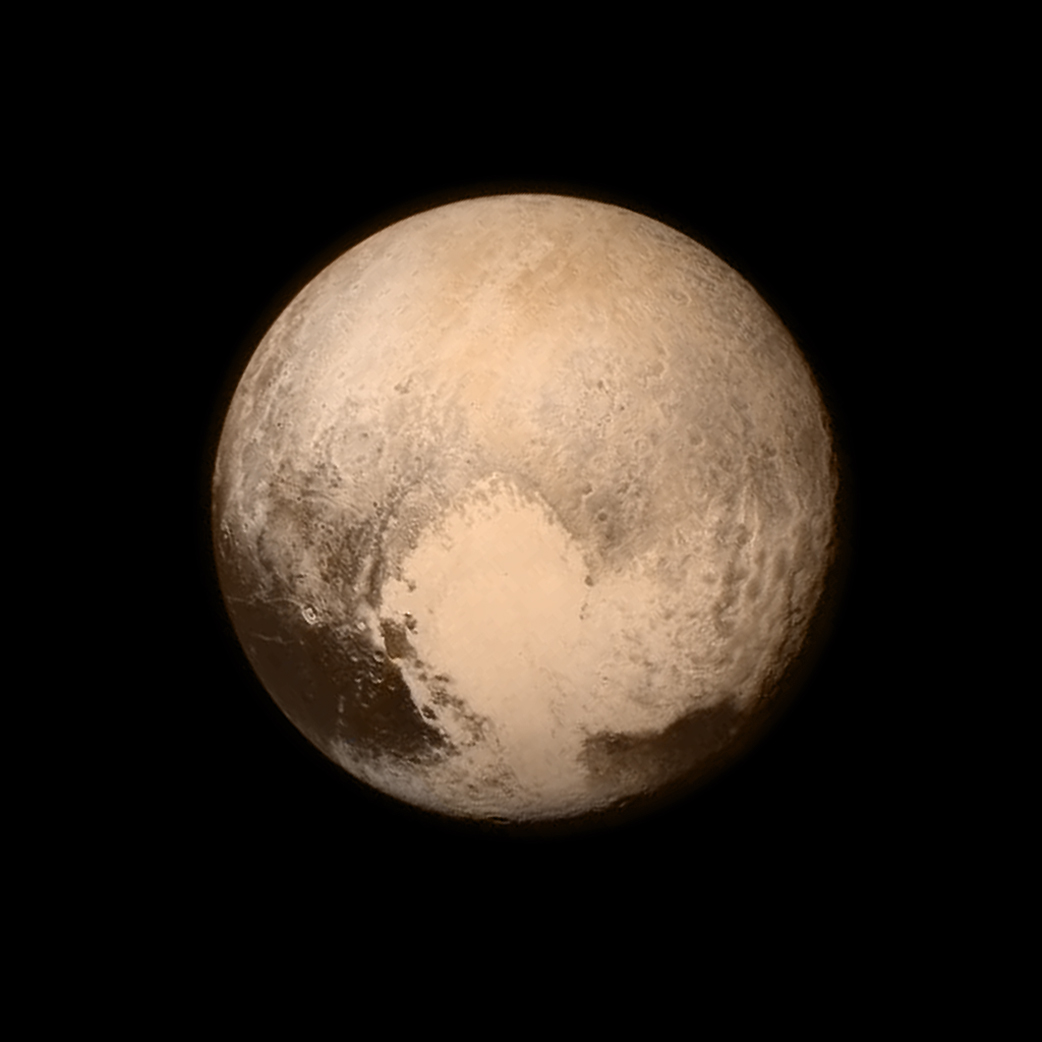World Map of Pluto Includes Every Image of Beloved Dwarf Planet

A black-and-white map of Pluto's surface — that includes all available and resolved images taken by NASA's New Horizons spacecarft — is the most comprehensive view yet of the icy world.
Prior to 2015, the dwarf planet Pluto looked like little more than a fuzzy speck of light hovering at the edge of the solar system. That all changed when NASA's New Horizons space probe made its close flyby of Pluto on July 14, 2015. Since then, the agency has released a flood of beautiful, detailed and scientifically surprising photos of the icy world.
The new map brings together all the images that NASA has been slowly releasing, into a single global overview of the solar system's largest known dwarf planet.
The New Horizons probe did not orbit Pluto, but instead made a quick flyby of the dwarf planet before heading further out into the Kuiper Belt, the band of icy, rocky bodies that loop around the sun beyond the orbit of Neptune. The probe is expected to make a flyby of another body in that region in 2019.

Because New Horizons did not orbit Pluto, the resolution of the map is much higher on one side of the dwarf planet — the side facing away from its largest moon, Charon. The map has "pixel resolutions ranging from 18 miles (30 kilometers) on the Charon-facing hemisphere (left and right edges of the map) to 770 feet (235 meters) on the hemisphere facing New Horizons during the spacecraft’s closest approach on July 14, 2015 (map center)," according to a statement from NASA.
The map includes images sent back to Earth "as recently as April 25," according to the agency. Because New Horizons acquired a massive amount of data during its Pluto encounter, and because it has a relatively slow download speed, it will take the spacecraft more than a year to send all of its Pluto data back to Earth.
Breaking space news, the latest updates on rocket launches, skywatching events and more!
"The team will continue to add photos [to the map] as the spacecraft transmits the rest of its stored Pluto encounter data," NASA said. "All encounter imagery is expected on Earth by early fall. The team is also working on improved color maps."
The New Horizons mission revealed many amazing new details about Pluto, including that the icy world has experienced relatively recent geologic activity. While much of Pluto's surface is covered in craters, a region unofficially known as Sputnik Planum (also known as Pluto's "heart"), is conspicuously crater-free.
Follow Calla Cofield @callacofield. Follow us @Spacedotcom, Facebook and Google+. Original article on Space.com.
Join our Space Forums to keep talking space on the latest missions, night sky and more! And if you have a news tip, correction or comment, let us know at: community@space.com.

Calla Cofield joined Space.com's crew in October 2014. She enjoys writing about black holes, exploding stars, ripples in space-time, science in comic books, and all the mysteries of the cosmos. Prior to joining Space.com Calla worked as a freelance writer, with her work appearing in APS News, Symmetry magazine, Scientific American, Nature News, Physics World, and others. From 2010 to 2014 she was a producer for The Physics Central Podcast. Previously, Calla worked at the American Museum of Natural History in New York City (hands down the best office building ever) and SLAC National Accelerator Laboratory in California. Calla studied physics at the University of Massachusetts, Amherst and is originally from Sandy, Utah. In 2018, Calla left Space.com to join NASA's Jet Propulsion Laboratory media team where she oversees astronomy, physics, exoplanets and the Cold Atom Lab mission. She has been underground at three of the largest particle accelerators in the world and would really like to know what the heck dark matter is. Contact Calla via: E-Mail – Twitter
